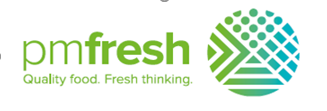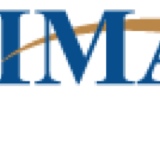Information
-
Document No.
-
Audit Title
-
Client / Site
-
Conducted on
-
Prepared by
-
Location
-
Personnel
1. Permitted items and use of materials
-
1.1 only items listed on applicable permitted item register are with in the area.
-
1.2 All items on permitted items register are clean, in good condition and stored appropriately.
-
1.3 No staples, dog clips, paper clips, magnetic board markers in hi hygiene zones.
-
1.4 No wood in hygiene zones excluding pallets in palletising area or maturing boards in pressed cheese.
-
1.5 No pencils or wooden handled tools or equipment
-
1.6 No temporary fixtures on plant and premises such as rags, string, tape, twist ties, metal clips or staples.
-
1.7 No product labels stuck on machinery.
-
1.8 No packaging materials left on packaging equipment that is not being used.
-
1.9 Packaging not being used for anything other than intended.
2.0 Personal items.
-
2.1 No mobile phones or similar devices, unless by authorised personnel.
-
2.2 No cigarettes /lighters.
-
2.3 Items such as pens not carried above waistline.
3.0 Hand-wash facilities
-
3.1Hand basins clean, in good order
-
3.2 hand towel dispenser clean, in good repair.
-
3.3 Adequate hand towel.
-
3.4 Bin provided for hand towel and labelled
-
3.5 Soap dispenser clean and operating.
-
3.6 Sanitiser clean and operating.
-
3.7 Warm water available.
4.0 Hair & beard nets.
-
4.1 Hair net worn while in any hygiene zone.
-
4.2 Worn correctly, down below the earlobe and covering all hair.
-
4.3 Clean and in good condition.
-
4.4 Clean shaven daily or beard net worn in any hygiene zone.
-
4.5 Beard nets worn to completely cover facial hair.
5.0 Uniforms
-
5.1 Clean and in good condition.
-
5.2 Correct uniform for hygiene area.
-
5.3 No pins or buttons attached.
6.0 Jewellery policy.
-
6.1 No earrings or other piercings.
-
6.2 Only plain wedding bands worn - no stones or engravings.
-
6.3 No watches.
-
6.4 No necklaces or bracelets.
-
6.5 Medical alert device approved.
7.0 Hands.
-
7.1 Nails kept short and clean.
-
7.2 No nail polish.
-
7.3 No false finger nails or nail art.
-
7.4 Persons entering the area are following proper hand washing procedures.
8.0 Cosmetics.
-
8.1 No strong perfumes / aftershaves.
9.0 No tools, loose nuts, screws and bolts etc.
-
9.1 Stored on equipment.
-
9.2 Stored in primary or secondary packaging.
-
9.3 Left on ledges, tables, platforms, vats, tanks, control panels etc.
10.0 Ingredients.
-
10.1 Ingredients stored in designated areas, not on the floor.
-
10.2 Ingredients are enclosed in packaging or in enclosed storage containers.
-
10.3 Ingredients storage containers or packaging labelled with ingredient type and batch number (batch number must be on partially used ingredients.
-
10.4 Lion product packaging is not being used to store partially used ingredients.
-
10.5 Ingredient storage containers, scoops and utensils are clean and in good condition.
11.0 Packaging.
-
11.1 Packaging stored in designated areas, not on floors or equipment.
-
11.2 Primary packaging is covered / sealed from environment.
-
11.3 Batch number details maintained on primary packaging.
-
11.4 Only packaging being used on the day of audit is stored in the area.
12.0 General and cheese waste bins.
-
12.1 Clean.
-
12.2 In good repair.
-
12.3 Clearly identified for intended use (labelled or colour coded).
13.0 Trolleys.
-
13.1 Clean and free from waste.
-
13.2 In good repair.
-
13.3 Wheels clean and wheel guards in good repair.
14.0 Parts trolleys.
-
14.1 Equipment stored on correct parts trolley.
-
14.2 Equipment clean, in good repair.
-
14.3 Wheels clean and wheel guards in good repair.
-
14.4 Parts trolley only used to store intended items - no foreign tools etc.
15.0 Mobile tables and ladders.
-
15.1 In good repair, clean, no rust.
-
15.2 Free from accumulation of waste.
-
15.3 Wheels clean and wheel guards in good order.
16.0 Emergency / first aid equipment.
-
16.1 Emergency exit lights intact and working.
-
16.2 Fire alarms ( break glass in event of fire) - glass intact.
-
16.3 Chemical shower and eye wash station clean and working properly.
17.0 Hose stations.
-
17.1 Hoses clean.
-
17.2 Hoses and nozzles in good repair, no cracks, no splits etc.
-
17.3 Hose reel and control panel in good repair, no damage or rust.
-
17.4 Gauges clean, no damage.
-
17.5 Pipes, clean, no leaks, no damage.
18.0 Cleaning equipment.
-
18.1 Cleaming equipment stored correctly - hooks or shadow boards.
-
18.2 Clean.
-
18.3 In good repair / no rust.
-
18.4 Correct colours being used as per colour coded cleaning system
19.0 Chemicals.
-
19.1 Chemicals stored in designated areas ( bunds or segregated from product, ingredients and packaging).
-
19.2 Clearly labelled.
-
19.3 Chemical containers clean and in good repair.
-
19.4 Spray bottles / measuring jugs clean and labelled appropriately.
-
19.5 Cleaning chemicals are those listed on the cleaning schedule.
20.0 PPE.
-
20.1 Gloves in good repair.
-
20.2 Hearing protection in good repair and clean.
-
20.3 Eye protection in good repair and clean.
-
20.4 Aprons in good repair and clean.
-
20.5 Stored in designated areas - not on equipment.
21.0 Pest control.
-
21.1 No rodent activity ( droppings, nests, chewing).
-
21.2 No insects (flys, moths, beetles).
-
21.3 Fly lights are working and are clean and in good repair.
22.0 Records.
-
22.1 Records completed properly for previous day.
-
22.2 CCP, QCP, QP & CP results recorded at required frequency and within critical limits or corrective action have been recorded ( chech against HACCP plan).
-
22.3 Records from previous day verified by team leader or designated person.
-
22.4 Correct revision of records being used ( checked against SEQIS).








